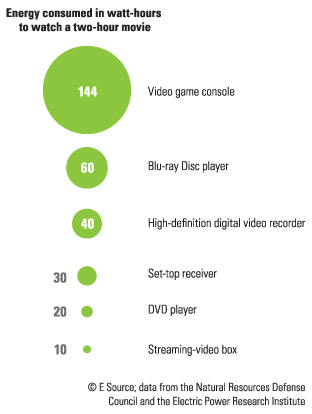 Now that chilly winter evenings are here, Oregonians are gearing up for more couch time. How energy efficient are your TV habits?
Now that chilly winter evenings are here, Oregonians are gearing up for more couch time. How energy efficient are your TV habits?
Among the devices used to watch TV, set-top boxes are the most prolific, but there are more energy-efficient ways to watch TV. According to the “Energy Consumption of Consumer Electronics in U.S. Homes in 2013” report from the Consumer Electronics Association, the average residential set-top box configuration uses 75 kilowatt-hours of energy annually.
DVD or Blu-ray players are another popular way to watch movies, but the energy use associated with using these devices varies dramatically. Stand-alone DVD players are typically the most efficient, drawing around 10 watts of power (a little less than a standard compact fluorescent light bulb) when in use. In contrast, a stand-alone Blu-ray player can draw over three times as much power, and a video game console can use six times as much power. Streaming videos with your game console is the most energy-hogging option.
Finally, many people now stream video content on an Internet-enabled TV or through a separate box such as an Apple TV, Roku or Google TV. Streaming is the most efficient way to watch movies or TV shows, drawing as little as 5 watts of power when in use. That’s half the power of a DVD player and less than one-third the power of a standard set-top box.
Want to measure your TV’s energy use down to the watt? Check out a Kill A Watt® monitor from your local library to measure the energy use of appliances in your home. If it’s time to buy new equipment, maximize your energy savings with ENERGY STAR® qualified TVs and home electronics.

